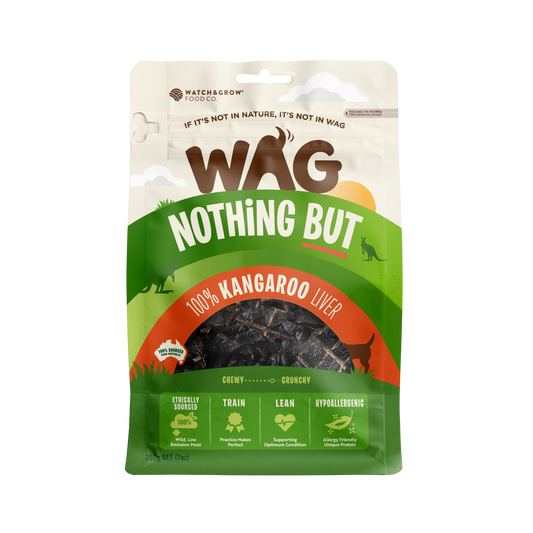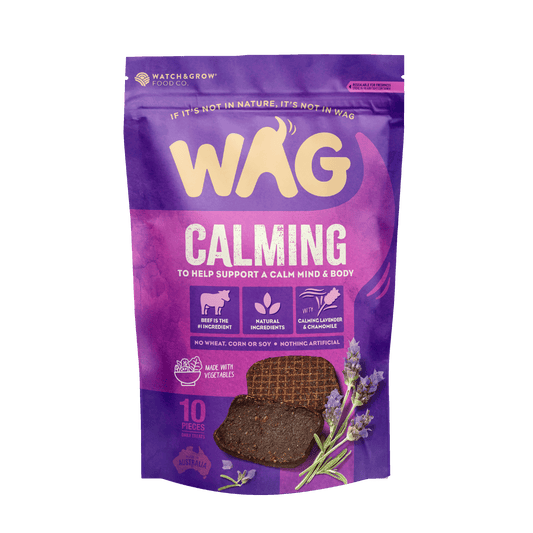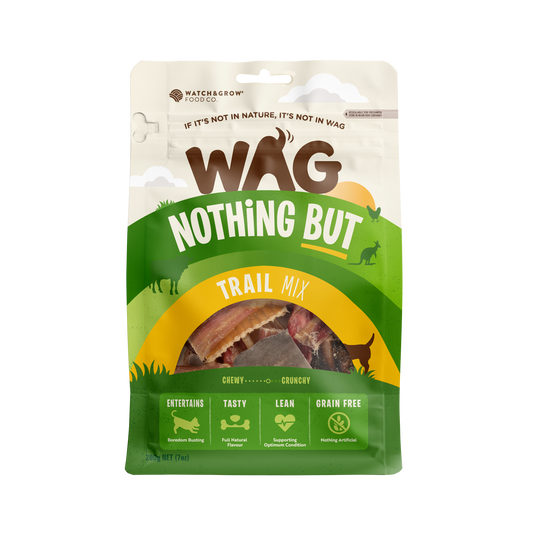Training your dog can sometimes feel like that scene out of Jurassic World. You know, the scene where Chris Pratt is trying to keep four raptors at a safe distance? Pratt might be able to keep those raptors at bay with some stern words and hand movements, and that’s because training had gone into building his relationship with the raptors as the leader of the pack.
So what does a reboot of a classic 90s film have to do with dog training? Other than the fact that being nipped by razor-sharp puppy teeth can sometimes feel a bit like a raptor attack, in the earlier training scenes you’ll notice that Pratt’s character is using a clicker. Clickers are tools used in training, that, when pressed down or activated by the user, make a clicking sound, getting the attention of its subject. We’ve rounded up everything you need to know about how to clicker train your dog or puppy (or raptor!).
What is clicker training?
Clicker training is a form of positive reinforcement and operant conditioning for your dog. Dogs are motivated by reward-based training. So clicker training focuses on the click as a reward for your dog’s good behaviour and becomes a conditioned reinforcer for other good behaviours. Put simply, when your dog hears the click they know that they’ve done something right.
Using a clicker is an easy way of marking the exact moment your dog does the right thing. It saves time on getting a treat out of your pocket and can be especially useful if your dog isn’t motivated by food as a reward. It’s a clearer way of communicating the exact time that they did something right.
Why use a clicker?
Some trainers use marked works such as “yes” or “good” as praise during training. These can also work but they’re not necessarily as clear at marking good behaviour. Gushing over our dogs is something that we love to do as owners, which means that praise isn’t specific to training. The benefit of a clicker is that it’s a clear and quick sound that your dog can identify and it’s exclusive to good behaviours and training.
Clicker training is also more immediate form of validation, which can help make it clearer for your dog to know exactly what you want them to do. For example, if you’re teaching your dog to sit and they hear the click the moment their butt hits the floor, they know that’s the action you want them to perform. Hesitating just a moment to get a treat or praise them could be confusing.
Clicker training is a great choice of training if your dog isn’t motivated by treats (rare, but it does happen!). If your dog uses another motivator, it can be hard to reward them at the exact moment they do something right. Using a clicker allows you to mark the action with the click and then reward them with their motivator, whether it’s a scratch on the belly, a toy, or a game of fetch.
How to clicker train your dog
Make sure your dog knows what the clicker means
As with any marker sound, the first step is making sure that your dog associates that sound or mark with something good. The first few sessions of clicker training should be about teaching your dog that the click means they will receive a reward. Click; treat. Click; treat. Click;treat. This is also a good way to make sure your dog is used to the sound of the click, pays it the appropriate amount of attention and isn’t startled by the sound.
Get your timing right to train or teach tricks
Once your dog associates the click with something good it’s time to move onto tricks. Timing is everything here. You need to make sure you’re clicking at the exact behaviour you want your dog to perform.
We’ll go back to the sitting example. If you’re teaching your dog how to sit you want to make sure that you use the clicker to mark the exact moment their butt hits the floor.
- Tell your dog to sit.
- Click the moment your dog touches the floor.
- Reward them after the click.
Make sure that your dog continues to see the click as high value by continuing to reward them throughout your clicker training.
Use a clicker to reward good everyday behaviour
Knowing how to clicker train your dog doesn’t just come down to what you do during training. It’s also important to reward your dog when they’re behaving in everyday life.
If your dog is lying down and being obedient, you can use a clicker to mark that good behaviour before fetching a reward. This means your dog is going to associate that they’ve done something good before you physically go and get the treat. Getting the treat first could make them get excited and break the behaviour that you’re trying to reward.
A clicker can help positively reinforce good behaviour around the house, at the dog park, or on a walk. This is going to be much easier than constantly having a pocket full of treats that your doggo can smell a mile off.
Mark good behaviour when using the luring method
Some tricks are easier taught with the luring method. The luring method refers to “luring” your dog into a certain action with a treat or reward.
The trouble with luring is that it can also be easily confused with bribing your dog to do something. This adds the risk that your doggo will only perform certain actions when they already know that you have a treat.
Teaching your dog to lie down is a good example of using the luring method. Some trainers teach you to encourage your dog from a sit into a laying down position by luring them with a treat. While this can teach your dog to lie down, it’s difficult to mark the exact behaviour you want them to do when they’ve fixated on an external reward. Using a clicker can mark the exact moment their belly touches the floor before they receive that reward. Eventually, you should be able to remove the lure and use the clicker on its own.
Shape new behaviours with a clicker
Teaching your dog more complex behaviours and tricks needs to be done in stages — and using a clicker is a great way to achieve this! Shaping is a way of training your dog by adding rewards to each stage or section of a trick.
Say that you want to teach your dog to push a ball towards you. First, you need to teach them to pay attention to that ball. Practice on the floor and use the clicker every time your dog focuses on that ball. Once your dog is aware that you want them to focus on the ball, it’s time to get them to touch it. Encourage your dog to boop the ball with their nose or paw and reward them with the clicker when they do. Continue the training session for each new step until your dog has mastered the trick.
What’s the difference between clicker training and marker training?
Essentially clicker training is exactly the same as marker training. It’s just that the sound of your mark is different.
In marker training, we used words like “yes” or “good” to communicate that our dog has done the right thing. In clicker training, we simply use the sound of the clicker to communicate that we are pleased with the behaviour.
Neither training method is right or wrong and it’s all going to depend on what works best for you and your dog. If you have a particularly excitable pup who is struggling to respond to marker words then a clicker could be a more clear way of training them down the track.
Knowing how to clicker train means you’ll be able to test the best training methods that work for you and your dog. You can shape behaviour, teach new tricks or simply reward your dog for being good. But don’t forget that the clicker and treats go hand in hand, particularly in the early stages of training. Even Chris Pratt knows that he has to reward his raptors with a tasty treat for their good behaviour. And if he can do it, so can you!
Try This
WAG Team
Up Next
10 Years of WAG (2010 - 2020) with Jeremy




